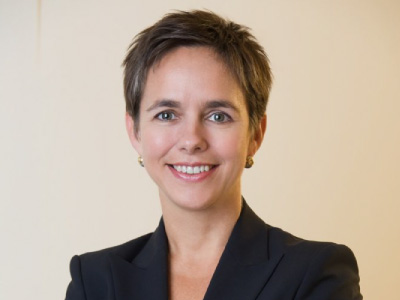“It’s a women’s empowerment issue”
By Serra Sippel, president of the Center for Health and Gender Equity (CHANGE)
Adolescent girls and young women in sub-Saharan Africa face a host of social and legal factors that increase chances that they will contract HIV: Poverty, gender inequality, violence, lack of access to education, teenage pregnancy, and early marriage all converge to maintain a high incidence of HIV infection. But this population has finally received long overdue attention and care (spoiler alert: it includes access to female condoms!).
A $385 million groundbreaking partnership, called DREAMS, was created specifically to help reduce HIV infections in adolescent girls and young women, with a comprehensive approach that extends beyond traditional medical treatment for disease. DREAMS stands for Determined, Resilient, Empowered, AIDS-free, Mentored and Safe, and it enlists families, community and religious leaders, young women, and educators to empower girls and young women. Introduced by the U.S. President’s Emergency Plan for AIDS Relief (PEPFAR) and launched in 2014 with private partners the Bill and Melinda Gates Foundation, The Girl Effect, Johnson and Johnson, ViiV Healthcare, and Gilead, DREAMS aimed to reduce the incidence of HIV infections in girls and young women by 40 percent in 10 sub-Saharan African countries[1] by the end of 2017.
In August 2017, CHANGE traveled to Uganda and Swaziland to learn how DREAMS is working for adolescent girls and young women in those countries. CHANGE learned that the holistic, multi-sectoral strategy of DREAMS, combined with adolescent-friendly services, voluntary family planning counseling and services, PrEP provision, and the promotion of female and male condoms is making a difference. But CHANGE also learned that more must be done to help girls and women prevent HIV, and that is especially true when it comes to female condoms.
The consistent and correct use of female and male condoms is a proven, effective method in preventing HIV infections and unplanned pregnancy. The US Agency for International Development (USAID) procured 18 million male condoms and UNFPA procured 1.2 million female condoms for Uganda in 2016, while in Swaziland, USAID procured over 25 million male condoms and 146,000 female condoms in 2015. Support and availability of female condoms increased significantly in sub-Saharan Africa since 2000. Despite these efforts, female condoms are less utilized than male condoms in both countries.
According to the 2016 UNAIDS Prevention Gap Report, Swaziland had the second-highest level (after Namibia) of availability of male condoms in the region, and they remain more easily available than female condoms. More than one prime partner told CHANGE that women are discouraged from obtaining condoms (male or female), and that for women, sex as a topic is still taboo. Where there is female condom uptake, they are more popular with women over the age of 30. “I don’t know what we can do as a country to market the female condom,” one civil society partner in Swaziland told CHANGE. “A lot of people who prefer those are above 30. But not the youth. I think we need to do a lot of capacitating when it comes to the female condom use. It’s a women’s empowerment issue.” In Uganda, a civil society partner that provides condoms as part of contraceptive services told CHANGE despite efforts to provide female condoms in contraceptive packaging, “the uptake is very low.” However, with improved engagement in conversation, girls have been more willing to take female condoms.
DREAMS has sought to change that dynamic with some success; girls and young women told CHANGE they learned about female condoms for the first time from DREAMS and enthusiastically demonstrated how it is inserted. One of PEPFAR’s in-country team members said in an interview that the U.S. government’s approach is “risk avoidance,” supplying the young women with things that would reduce risks. “They need info about condoms, about contraception, and they get that,” the team member said.
On the eve of World AIDS Day, new data from PEPFAR showed that new HIV diagnoses among adolescent girls and young women in targeted communities within DREAMS countries were reduced by 25 – 40%. This is great news and shows that with designated funding and political will to provide women and girls with a multi-sectoral approach that includes female condom access, we can achieve an AIDS-free generation.
[1] The 10 countries that are part of the DREAMS partnership are Kenya, Lesotho, Malawi, Mozambique, South Africa, Swaziland, Tanzania, Uganda, Zambia, and Zimbabwe.
About the author: As president of CHANGE, Serra Sippel leads the organization's advocacy efforts to advance gender equality by promoting the sexual and reproductive health and rights of women and girls globally. A respected thought leader in global health and reproductive rights communities, Serra is often
sought out for her expertise on HIV prevention for women and girls; U.S. support or abortion access for women raped in conflict; access to family
planning; and the role that successful policy advocacy plays in holding the U.S. government accountable to its commitments to gender equality and
human rights. Under her leadership, CHANGE was able to get “female condoms” included in PEPFAR reauthorization legislation in 2008.
Related Resources
Your Content Goes HereThe FC2/PrEP Facilitators Manual
GNP+ and the Female Health Company have created a facilitators manual for increasing community awareness about two user-controlled prevention tools; the FC2 Female Condom and PrEP (Pre-exposure prophylaxis). When used consistently, correctly and in combination, they can dramatically increase a women’s ability to protect themselves from HIV, sexually transmitted infections and unplanned pregnancy. It puts the power of choice, flexibility and control in women their hands.


Leave A Comment